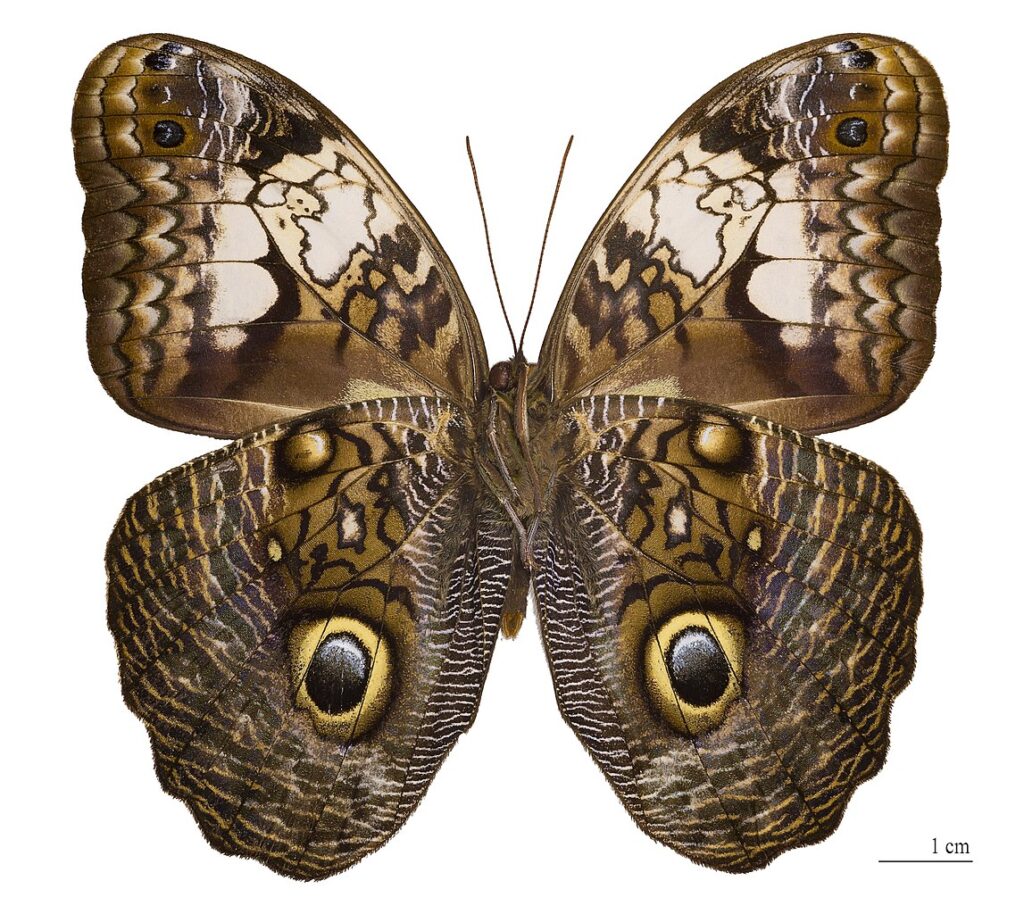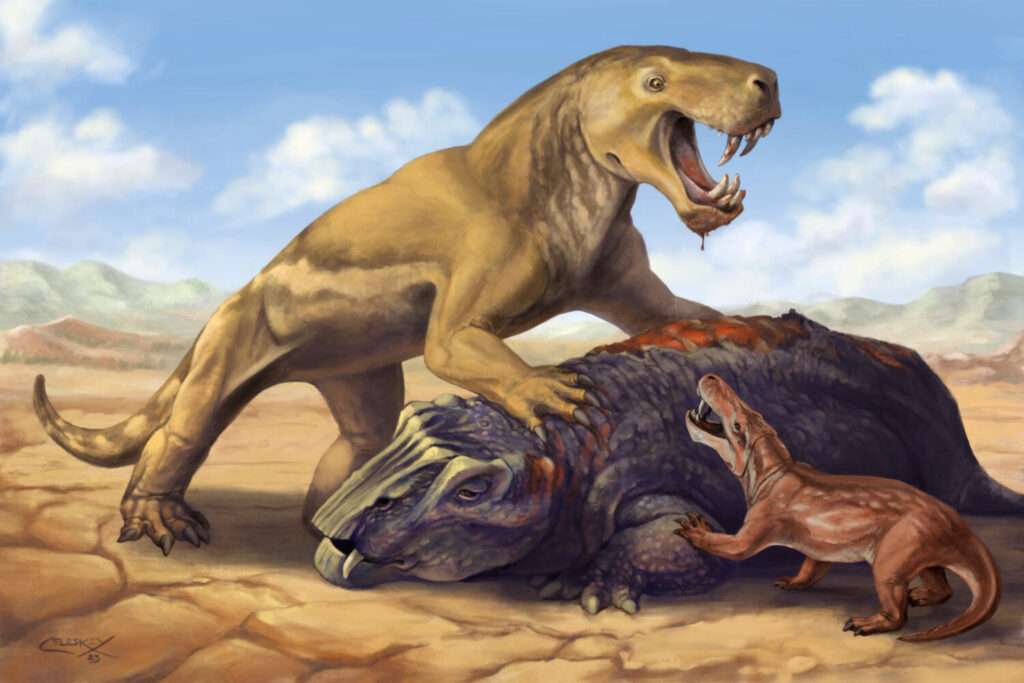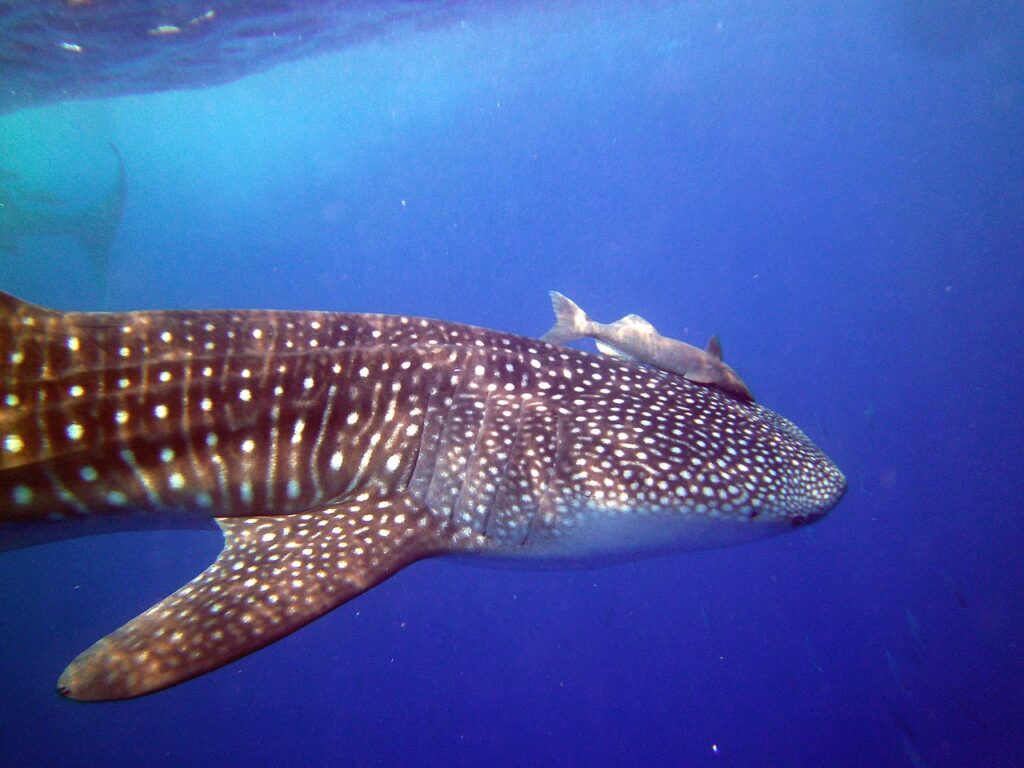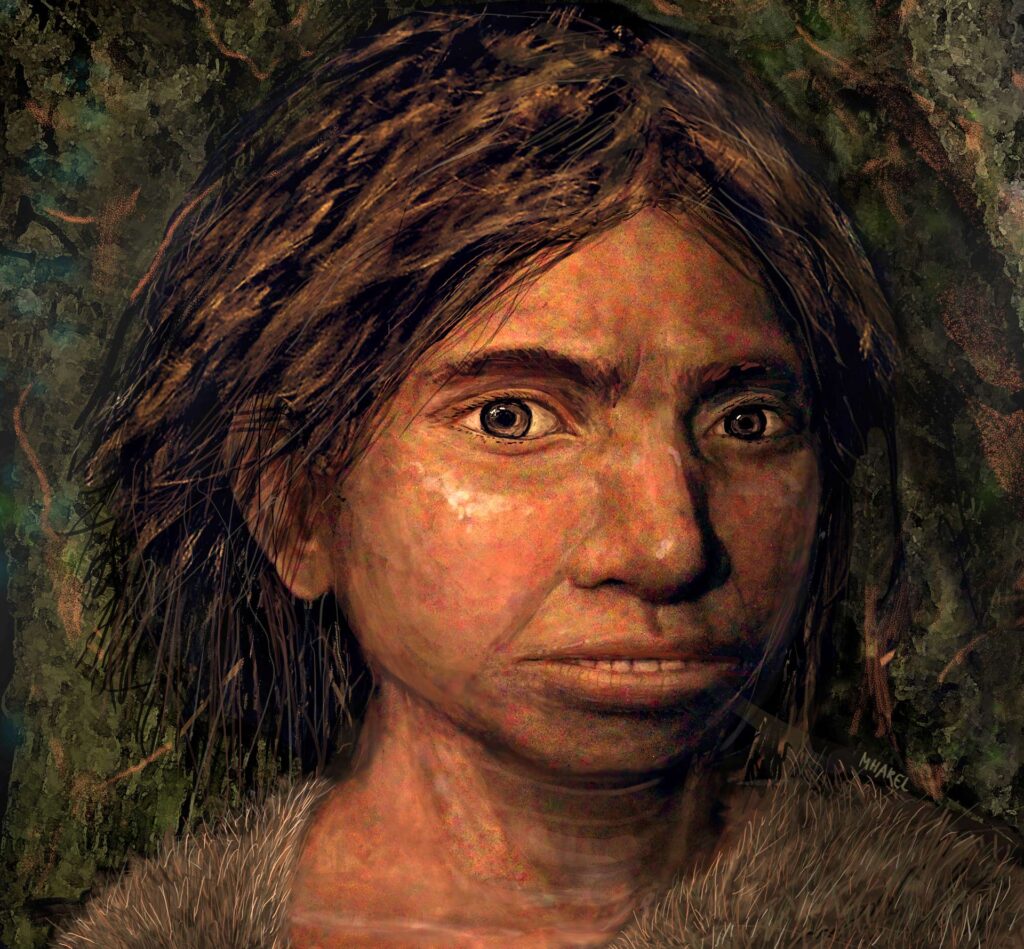
Camouflage is a powerful survival strategy. “The owl butterflies are species of the genus Caligo and are known for their huge eyespots, which resemble owls’ eyes.” ( Wikipedia ) Image: Didier Descouens
By Mariana Meneses
In nature, species have evolved diverse adaptation strategies to evade predators.
You may already be familiar with the camouflage ability of many species, such as the chameleon, the octopus, seahorses, and frogs, along with owl butterflies and numerous others.
Consider also how baby elephants, deer, and giraffes, among others, can walk shortly after birth, aiding in their escape from predation. Moreover, species like scorpions, jellyfish, and snakes have evolved mechanisms to deliver venom when threatened. These are just a few examples.
Advancing scientific understanding continues to reveal more details of survival tactics, highlighting the multifaceted nature of evolutionary dynamics where success hinges not only on the ability to kill but also on alternative defence mechanisms when they offer greater advantages.

An ermine moth (Yponomeuta evonymella). The arrows indicate the tymbals, an organ that produces ultrasonic warning sounds used in anti-bat acoustic defenses. Credit: University of Bristol
Take, for instance, a fascinating study reported by Phys.org that was conducted at the University of Helsinki, which sheds light on how predators select their prey based on appearance.
Using digital databases of moth images, they discovered that moths with camouflage patterns have a wider range of appearances than species with warning signals, such as colourful markings (aposematism), which warn predators about toxicity or danger, with examples including skunks, poison dart frogs, wasps, and ladybugs. This suggests that camouflaged moths try to blend in with their surroundings by displaying different patterns, while those with warning signals stick to similar colours and patterns to alert predators that they also pose danger and are equipped to defend themselves if threatened.
The study not only confirms a long-held theory but also highlights the importance of digital archives in answering big questions about evolution.

Inostrancevia with its dicynodont prey, scaring off the much smaller African species Cyonosaurus. Image: Matt Celeskey / Sci News
It is true that the ‘killer instinct’ influenced mammal evolution as a powerful survival strategy in the wild.
The evolutionary success of early land predators, precursors to mammals, was closely tied to their adaptation as efficient killers, driven by the need to overcome challenges posed by larger and faster herbivores. As reported by Science Daily, researchers from the University of Bristol and the Open University studied the jaw anatomy and body size of ancient predators, revealing a significant shift in predatory behavior approximately 270 million years ago.
This shift marked a transition towards shorter jaws with greater muscle efficiency and fewer teeth, indicating a focus on delivering deep, powerful bites to quickly incapacitate prey. This adaptation coincided with the emergence of new, larger herbivores, presenting greater challenges to predators and necessitating evolutionary responses towards becoming bigger and more effective killers. The findings underscore how ecological pressures from prey influenced the anatomical evolution of early land predators, offering insights into the dynamics of predator-prey interactions and the broader context of life’s evolution on Earth.
However, we could argue that collaboration defines the most complex forms of relationships we see in the wild. Take, for example, the case of the whale shark and remora.
Whale sharks and remoras share a mutualistic relationship where sharks provide remoras with food and transportation, while remoras clean the sharks by eating parasites off their skin. Remoras grow to between 30 and 110 cm in length, and their first dorsal fins contain structures that open and close in a way that creates suction and allows them to remain attached to larger marine animals.

Whale sharks and remoras. Image: Nicholas Lindell Reynolds
There is still a lot we don’t understand about evolution, and, as time passes and climate changes, we gather more data on the reality of our universe.
We follow the path of those before us to refine our theories and understanding.
SciTech Daily reports on research conducted by Christian Frølund Damgaard, a professor at Aarhus University, which challenges conventional ecological theories, particularly those related to evolutionary principles. Contrary to expectations derived from traditional evolutionary frameworks, Danish meadows and pastures are exhibiting unexpected patterns.
Defying established ecological theories, which predict that increased competition among plants should lead to the dominance of species with heavy seeds and thin leaves, the data from 236 natural areas across Denmark reveal a different trend. Despite less grazing and disturbance, there are fewer weeds, yet plants with heavy seeds and thin leaves are not proliferating as expected.
This discrepancy highlights a significant departure from classical evolutionary predictions and underscores the complexity of ecological dynamics. Damgaard’s study calls into question the adequacy of current evolutionary models in explaining contemporary shifts in natural ecosystems, prompting a reevaluation of traditional paradigms and the need for further investigation into the underlying mechanisms driving these unexpected trends.
It seems that to be able to reduce some uncertainties about what to expect from the future, we need to keep looking at our shared past.

Swedish evolutionary geneticist Svante Pääbo made possible the sequencing of the Neanderthal genome. Image: Britannica
Svante Pääbo, a pioneer in the field of paleogenomics, was awarded the Nobel Prize in Physiology or Medicine in 2022 for his transformative work on human evolution.
His achievements include sequencing the genome of the Neanderthal, an extinct relative of modern humans, and discovering a new hominin, Denisova. Pääbo’s research revealed that gene transfer from these extinct hominins to Homo sapiens occurred around 70,000 years ago following their migration out of Africa. This ancient gene flow has contemporary physiological relevance, influencing, for example, our immune system’s response to infections.
Pääbo’s work has not only given rise to a new scientific discipline but also provides a foundation for exploring “what makes us uniquely human”.
Paleogenomics is the scientific study focused on reconstructing and analyzing genomic information from extinct species, offering insights into their evolutionary history and genetic relationships with modern organisms. (Wikipedia).

“A portrait of a juvenile female Denisovan based on a skeletal profile reconstructed from ancient DNA methylation maps.” Image: Maayan Harel / SciNews
Embracing the ongoing refinement of knowledge through empirical observation and analysis continues to unveil the intricate tapestry of survival strategies and evolutionary dynamics in our shared past with other species on Earth.
This challenges traditional paradigms and propels humanity towards a deeper understanding of our place within the natural world.
Craving more information? Check out these recommended TQR articles:
- Secrets of Evolution in the Wings of Fruit Flies
- Amazing Evolutionary Leaps: Observing the Rapid Evolution of Single Cell Organisms into Complex Lifeforms
- Breaking the Language Barrier: AI’s Multilingual Future May Change How We Understand Our Present and Past
- Before We Move Out: Life Outside Earth Could Feature French Fries and Blood Deficiencies
- Life Beyond Plastic: How Insects and Enzymes Could Hold the Key to Solving Plastic Pollution
- Life Is Defined by Biology, Not Physics



